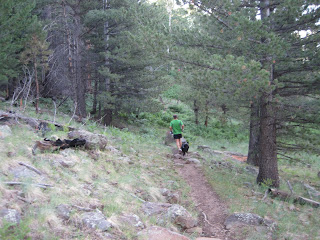I love Flagstaff. Ever since I traveled here from Pennsylvania with my college track team during Spring Training in 1993, I've been captured by it's mountains, it's people and it's curative energy. So when the Jif hit the fan last month I felt something in me snap then slowly sadden...which brings me to this cathartic blog post...
“Fires are neither evil or good. It’s not black and white, not all good or all bad. They do what they do—burn. They get carried by the weather and pushed into fuels…but we are resilient and have the capacity to recognize we make mistakes. Preventing a fire like this requires continued thinning on the landscape and education about how to put out campfires.” -Daniel Laughlin, from InsideNAU
"If economics and human selfishness continue to trump the values of the natural world, then the future of humans on Earth will look much like the blackened forest of Flagstaff, Arizona." -Paul Torrence, from his OpEdNews piece "Igniting the Southwest"
January 2010
January 22, 2010: Almost 54 inches of snow.
One of the worst winter storms Flagstaff has witnessed since 1967. I so wanted the sun and warmth during this time and now, today, all I wish for is a little of that white stuff to return.
Six Months Later
June 2010
June 20, 2010
Lesson 3 (Lessons 1 & 2 are below, but follow along): The 2010 Schultz Fire. Cost: $9 million and counting. Looking up at the San Francisco Peaks from the once threatened/evacuated sub-divisons below.
The Waterline Trail (once one of Flag's most popular trails) can be seen as a faint line that crosses the slopes. Rumors are that this trail is gone for good. Burned, eroded, and littered with downed trees and debris.
A mountainside gone! As are 15,000 acres of critical wildlife habitat, wilderness character, miles of hiking, biking and running trails, and a community's water supply. What remains, however, is what elicits even more sorrow: A mountainside ready to collapse onto subdivisions below during the next monsoon, millions of dollars of mitigation funding, and a legacy of mismanagement and human selfishness.
Only moist patches of aspen held their ground as the fire rolled through and around. Let's hope these guys are aggressive and establish themselves quickly on slopes barren of ground cover.
The Schultz Fire caught at night.
Clearly Not Learning the Lesson nor Getting the Message...

Lesson One: The 1977 Radio Fire (as seen today) on Mount Elden still remains visible for all to see. Eerily located not two miles from the Schultz Fire perimeter. Visible from Flagstaff, but clearly not big enough or young enough to evoke the emotions of care or worry.
The Radio Fire burned 5,000 acres 33 years ago. As you can see, the scar remains and a mountain was changed forever. The 2010 Schultz Fire was three times larger.
Lesson 2: The Hochderffer/Horseshoe Fire Complex. What remains today after this 1996 fire.

The Hochderffer/Horseshoe Fire Complex charred 25,000 acres. Located and well hidden on the backside of The Peaks, only miles from where the Shultz Fire was stopped. Now that we've scarred our front-side and can see it every-time we awake in the morning, hopefully we'll come to terms and talk about this issue. Please, I for one, do not wish to witness/experience Lesson 4.
Here are two points-of-view that bring to light the circumstance and discuss its finality:
From Northern Arizona University and the Ecological Restoration Institute:
From my father and former Flagstaff resident, Paul Torrence, a rather raw and engaging piece:
Sorry folks, no Moment of Zen can be found here today...
This is all there is left to say...












































